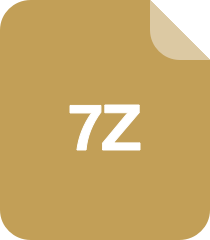# -*- coding: utf-8 -*-
__author__ = '樱花落舞'
import os
import cv2
import numpy as np
import debug
import img_math
import img_recognition
import config
SZ = 20 # 训练图片长宽
MAX_WIDTH = 1000 # 原始图片最大宽度
Min_Area = 2000 # 车牌区域允许最大面积
PROVINCE_START = 1000
class StatModel(object):
def load(self, fn):
self.model = self.model.load(fn)
def save(self, fn):
self.model.save(fn)
class SVM(StatModel):
def __init__(self, C=1, gamma=0.5):
self.model = cv2.ml.SVM_create()
self.model.setGamma(gamma)
self.model.setC(C)
self.model.setKernel(cv2.ml.SVM_RBF)
self.model.setType(cv2.ml.SVM_C_SVC)
# 训练svm
def train(self, samples, responses):
self.model.train(samples, cv2.ml.ROW_SAMPLE, responses)
# 字符识别
def predict(self, samples):
r = self.model.predict(samples)
return r[1].ravel()
class CardPredictor:
def __init__(self):
pass
def __del__(self):
self.save_traindata()
def train_svm(self):
# 识别英文字母和数字
self.model = SVM(C=1, gamma=0.5)
# 识别中文
self.modelchinese = SVM(C=1, gamma=0.5)
if os.path.exists("svm.dat"):
self.model.load("svm.dat")
else:
chars_train = []
chars_label = []
for root, dirs, files in os.walk("train\\chars2"):
if len(os.path.basename(root)) > 1:
continue
root_int = ord(os.path.basename(root))
for filename in files:
filepath = os.path.join(root, filename)
digit_img = cv2.imread(filepath)
digit_img = cv2.cvtColor(digit_img, cv2.COLOR_BGR2GRAY)
chars_train.append(digit_img)
# chars_label.append(1)
chars_label.append(root_int)
chars_train = list(map(img_recognition.deskew, chars_train))
chars_train = img_recognition.preprocess_hog(chars_train)
# chars_train = chars_train.reshape(-1, 20, 20).astype(np.float32)
chars_label = np.array(chars_label)
print(chars_train.shape)
self.model.train(chars_train, chars_label)
if os.path.exists("svmchinese.dat"):
self.modelchinese.load("svmchinese.dat")
else:
chars_train = []
chars_label = []
for root, dirs, files in os.walk("train\\charsChinese"):
if not os.path.basename(root).startswith("zh_"):
continue
pinyin = os.path.basename(root)
index = img_recognition.provinces.index(pinyin) + PROVINCE_START + 1 # 1是拼音对应的汉字
for filename in files:
filepath = os.path.join(root, filename)
digit_img = cv2.imread(filepath)
digit_img = cv2.cvtColor(digit_img, cv2.COLOR_BGR2GRAY)
chars_train.append(digit_img)
# chars_label.append(1)
chars_label.append(index)
chars_train = list(map(img_recognition.deskew, chars_train))
chars_train = img_recognition.preprocess_hog(chars_train)
# chars_train = chars_train.reshape(-1, 20, 20).astype(np.float32)
chars_label = np.array(chars_label)
print(chars_train.shape)
self.modelchinese.train(chars_train, chars_label)
def save_traindata(self):
if not os.path.exists("svm.dat"):
self.model.save("svm.dat")
if not os.path.exists("svmchinese.dat"):
self.modelchinese.save("svmchinese.dat")
def img_first_pre(self, car_pic_file):
"""
:param car_pic_file: 图像文件
:return:已经处理好的图像文件 原图像文件
"""
if type(car_pic_file) == type(""):
img = img_math.img_read(car_pic_file)
else:
img = car_pic_file
pic_hight, pic_width = img.shape[:2]
if pic_width > MAX_WIDTH:
resize_rate = MAX_WIDTH / pic_width
img = cv2.resize(img, (MAX_WIDTH, int(pic_hight * resize_rate)), interpolation=cv2.INTER_AREA)
# 缩小图片
blur = 5
img = cv2.GaussianBlur(img, (blur, blur), 0)
oldimg = img
img = cv2.cvtColor(img, cv2.COLOR_BGR2GRAY)
# 转化成灰度图像
Matrix = np.ones((20, 20), np.uint8)
img_opening = cv2.morphologyEx(img, cv2.MORPH_OPEN, Matrix)
img_opening = cv2.addWeighted(img, 1, img_opening, -1, 0)
# 创建20*20的元素为1的矩阵 开操作,并和img重合
ret, img_thresh = cv2.threshold(img_opening, 0, 255, cv2.THRESH_BINARY + cv2.THRESH_OTSU)
img_edge = cv2.Canny(img_thresh, 100, 200)
# Otsu’s二值化 找到图像边缘
Matrix = np.ones((4, 19), np.uint8)
img_edge1 = cv2.morphologyEx(img_edge, cv2.MORPH_CLOSE, Matrix)
img_edge2 = cv2.morphologyEx(img_edge1, cv2.MORPH_OPEN, Matrix)
return img_edge2, oldimg
def img_color_contours(self, img_contours, oldimg):
"""
:param img_contours: 预处理好的图像
:param oldimg: 原图像
:return: 已经定位好的车牌
"""
if img_contours.any():
config.set_name(img_contours)
pic_hight, pic_width = img_contours.shape[:2]
card_contours = img_math.img_findContours(img_contours)
card_imgs = img_math.img_Transform(card_contours, oldimg, pic_width, pic_hight)
colors, car_imgs = img_math.img_color(card_imgs)
predict_result = []
roi = None
card_color = None
for i, color in enumerate(colors):
if color in ("blue", "yello", "green"):
card_img = card_imgs[i]
gray_img = cv2.cvtColor(card_img, cv2.COLOR_BGR2GRAY)
# 黄、绿车牌字符比背景暗、与蓝车牌刚好相反,所以黄、绿车牌需要反向
if color == "green" or color == "yello":
gray_img = cv2.bitwise_not(gray_img)
ret, gray_img = cv2.threshold(gray_img, 0, 255, cv2.THRESH_BINARY + cv2.THRESH_OTSU)
x_histogram = np.sum(gray_img, axis=1)
x_min = np.min(x_histogram)
x_average = np.sum(x_histogram) / x_histogram.shape[0]
x_threshold = (x_min + x_average) / 2
wave_peaks = img_math.find_waves(x_threshold, x_histogram)
if len(wave_peaks) == 0:
print("peak less 0:")
continue
# 认为水平方向,最大的波峰为车牌区域
wave = max(wave_peaks, key=lambda x: x[1] - x[0])
gray_img = gray_img[wave[0]:wave[1]]
# 查找垂直直方图波峰
row_num, col_num = gray_img.shape[:2]
# 去掉车牌上下边缘1个像素,避免白边影响阈值判断
gray_img = gray_img[1:row_num - 1]
y_histogram = np.sum(gray_img, axis=0)
y_min = np.min(y_histogram)
y_average = np.sum(y_histogram) / y_histogram.shape[0]
y_threshold = (y_min + y_average) / 5 # U和0要求阈值偏小,否则U和0会被分成两半
wave_peaks = img_math.find_waves(y_threshold, y_histogram)
if len(wave_peaks) <= 6:
print("peak less 1:", len(wave_peaks))
continue
wave = max(wave_peaks, key=lambda x: x[1] - x[0])
max_wave_dis = wave[1] - wave[0]
# 判断是否是左侧车牌边缘
if wave_peaks[0][1] - wave_peaks[0][0] < max_wave_dis / 3 and wave_peaks[0][0] == 0:
wave_peaks.pop(0)
# 组合分�
 Python_VLPR-master.zip (47个子文件)
Python_VLPR-master.zip (47个子文件)  Python_VLPR-master
Python_VLPR-master  main_VLPR.py 8KB
main_VLPR.py 8KB train
train  chars2.7z 3.18MB
chars2.7z 3.18MB charsChinese.7z 1.05MB
charsChinese.7z 1.05MB img_recognition.py 2KB
img_recognition.py 2KB 1
1  img
img  捕获1.PNG 35KB
捕获1.PNG 35KB 捕获.PNG 1.07MB
捕获.PNG 1.07MB IMG_20180523_110335.jpg 3.52MB
IMG_20180523_110335.jpg 3.52MB svm.dat 4.41MB
svm.dat 4.41MB img_math.py 10KB
img_math.py 10KB debug.py 578B
debug.py 578B test
test  wA87271.jpg 51KB
wA87271.jpg 51KB timg2.jpg 25KB
timg2.jpg 25KB QQ图片20180428005054.png 369KB
QQ图片20180428005054.png 369KB hanhuan.png 420KB
hanhuan.png 420KB timg3.jpg 21KB
timg3.jpg 21KB timg.jpg 30KB
timg.jpg 30KB ganzou4.png 207KB
ganzou4.png 207KB 6I0GFMOFS5N8YXV4IAS}$DH.png 1.19MB
6I0GFMOFS5N8YXV4IAS}$DH.png 1.19MB )UL29G5OWJIH6]8Z77`$7RP.png 568KB
)UL29G5OWJIH6]8Z77`$7RP.png 568KB ganzou08.png 366KB
ganzou08.png 366KB wATH859.jpg 113KB
wATH859.jpg 113KB QQ图片20180601185934.jpg 97KB
QQ图片20180601185934.jpg 97KB car5.jpg 28KB
car5.jpg 28KB car4.jpg 25KB
car4.jpg 25KB timg1.jpg 54KB
timg1.jpg 54KB car7.jpg 27KB
car7.jpg 27KB Yes_img
Yes_img  1_3.jpg 26KB
1_3.jpg 26KB 2_1.png 1.31MB
2_1.png 1.31MB 1_1.jpg 3.15MB
1_1.jpg 3.15MB 2_2.jpg 4.33MB
2_2.jpg 4.33MB 3_2.jpg 2.59MB
3_2.jpg 2.59MB 1_2.jpg 58KB
1_2.jpg 58KB 3_1.png 395KB
3_1.png 395KB 2_3.jpg 363KB
2_3.jpg 363KB ganzou353.png 452KB
ganzou353.png 452KB timg4.jpg 21KB
timg4.jpg 21KB ganzou6.png 547KB
ganzou6.png 547KB lLD9016.jpg 24KB
lLD9016.jpg 24KB ganzou5.png 201KB
ganzou5.png 201KB cAA662F.jpg 61KB
cAA662F.jpg 61KB 20180428004514.png 97KB
20180428004514.png 97KB wAUB816.jpg 138KB
wAUB816.jpg 138KB ganzou7.png 629KB
ganzou7.png 629KB .gitignore 283B
.gitignore 283B svmchinese.dat 3.43MB
svmchinese.dat 3.43MB img_function.py 17KB
img_function.py 17KB config.py 220B
config.py 220B
 我的内容管理
展开
我的内容管理
展开
 我的资源
快来上传第一个资源
我的资源
快来上传第一个资源
 我的收益 登录查看自己的收益
我的收益 登录查看自己的收益 我的积分
登录查看自己的积分
我的积分
登录查看自己的积分
 我的C币
登录后查看C币余额
我的C币
登录后查看C币余额
 我的收藏
我的收藏  我的下载
我的下载  下载帮助
下载帮助 
 前往需求广场,查看用户热搜
前往需求广场,查看用户热搜

 信息提交成功
信息提交成功